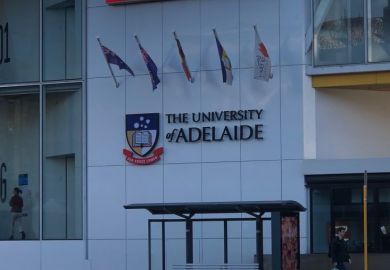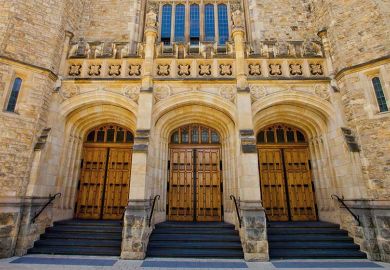“The planets are aligning” to facilitate the biggest coming together of two universities in global history, creating Australia’s largest educator of domestic higher education students.
Political leaders have vowed not to let upfront costs scuttle a proposed merger of the universities of Adelaide and South Australia, like they did when the two institutions last discussed amalgamating four years ago.
South Australian premier Peter Malinauskas would not be drawn on the factors that led to the collapse of the 2018 merger talks, the cost of merging or the likely state government contribution. But he said that the proposal was in the state’s interests and his administration was “committed to making an investment”.
“There is a cost to bringing two institutions of this size together, [but] every time we allow the public debate on these issues to descend into the dollars of today, it ends up being at the expense of people in the long term,” he told a press conference. He said that the universities would make submissions to his government on the sums required “and we don’t see them being a substantial stumbling block”.
Asked whether the proposal could proceed without federal government funding, Mr Malinauskas said he was “utterly confident” that the “collaborative approach” between both levels of government would deliver “the appropriate outcome”.
After the 2018 negotiations collapsed, University of South Australia vice-chancellor David Lloyd told staff that UniSA had ended talks after considering the proposal “through a cost-benefit lens”.
A discussion paper released two months earlier had warned that the sheer expense of combining the two institutions’ leadership, staff, courses, organisational structures, infrastructure, processes and technology – plus the “opportunity cost” of diverting attention from strategic initiatives and “business as usual activities” – could outweigh any benefits of merging.
While the two universities are mid-sized by Australian standards, they have far fewer international students than their big Melbourne and Sydney counterparts. The latest available figures suggest that the merged institution would have upwards of 50,000 domestic students – more than any existing Australian university.
Federal education minister Jason Clare argued an institution of that scale would be a magnet for global talent, saying: “That’s why I’m so keen for the commonwealth government to be a part of this.” He said that his department would consider how many subsidised university places would be needed by the combined university “to ensure that this project stacks up”.
Adelaide chancellor Catherine Branson cited evidence that Australia’s most successful universities were “larger” and their small counterparts were “struggling”. But sceptics say that while large institutional size assists research, students are disadvantaged by mergers because the constituent institutions no longer compete with each other for enrolments.
Adelaide vice-chancellor Peter Høj said that a merger would create a “university of sufficient scale” to give international employers confidence of finding staff with the “right skill sets” if they moved to South Australia.
Professor Høj also predicted spin-offs in international education. He said about 25 per cent of students across Adelaide and UniSA were from overseas, leaving scope and “social licence” for a merged institution to boost its international share to 40-plus per cent, as at large eastern state universities.
He said every three to four international university students generated a full-time job for a local. “You would be talking about hundreds of millions of dollars coming into this state. And that’s worth fighting for.”
Register to continue
Why register?
- Registration is free and only takes a moment
- Once registered, you can read 3 articles a month
- Sign up for our newsletter
Subscribe
Or subscribe for unlimited access to:
- Unlimited access to news, views, insights & reviews
- Digital editions
- Digital access to THE’s university and college rankings analysis
Already registered or a current subscriber?








